

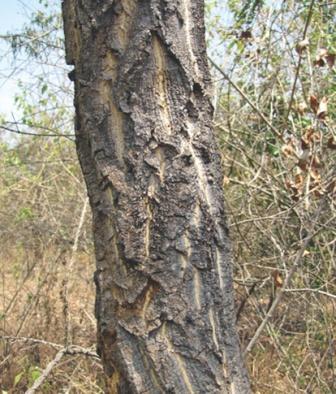
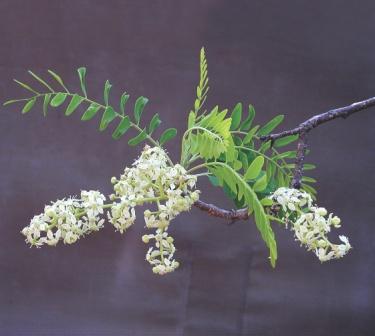
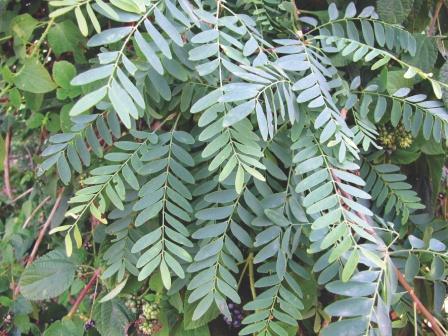
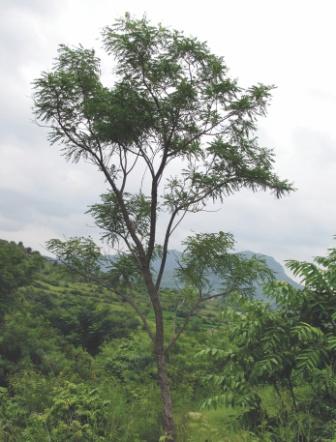
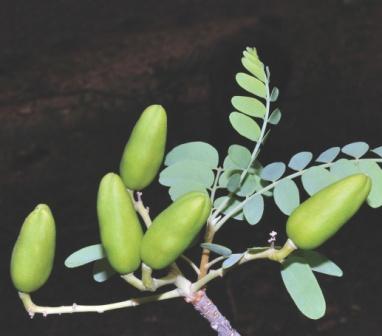
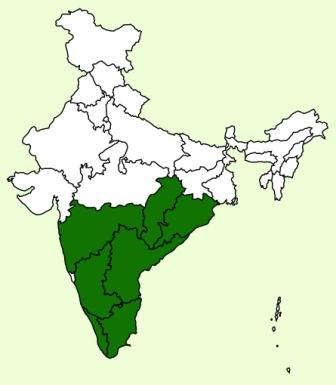
It is a small to a medium sized deciduous tree with a short and crooked stem and a spreading light feathery crown ordinarily ttaining a girth of about 1.5m and a clean bole of about 3m . It attains its maximum size in Srilanka ,where logs up to 2.7m in girth are common.
Throughout the indian peninsular, common in the dry deciduous forests of Bihar Madhya pradesh, Karnataka ,Tamil Nadu and Andra pradesh.
Natural Regeneration Under natural conditions , germination takes place during the rainy season. Artificial Regeneration The species can be propagated by seed ,entire seedlings and root-suckers. Seed collection and Storage 1.The collection of seed should be done well ahead of dehiscence of capsules take place. 2.The capsules are dried in the sun untill they dehisce ,the dried seed is storedin gunny bags or sealed tins . 3. In Tamil Nadu, the seed is reported to tore well upto 3 months , after which it deteriorates quickly and completely loses its viablity after 8 months. 4. Germination capacity and plant percent is 69 % respectively . Pretreatment No pre-treatment is required. Nursery Technique 1. The seeds are sown in June -July in the shaded beds to protect the germination seedlings from hot sun and against heavy rains . 2. The seed is lightly covered with pulverised soil . 3. Germination commences within a fortnight and is complete after 2 months. 4. Watering with fine rose is done regularly but sparingly . 5. As the seedlings are delicate and intolerant of competition ,regular weeding is essential . 6. After weeding , the seedlings are spread apart for healthy growth.
Direct sowing : 1. The species can be raised by direct sowing either in patches or lines or on ridges about 3m apart and 30 cm high. 2. The seedlings should be protected from the sun in the hot season , which can be done by sowing in cleared strips sheltered from the south by the existing forest growth or by raising nurse crop in advance . 3. Unweeded sowing proved a total failure as also sowings on patches of stiff soil. 2. Stump planting : 1.The species can be successfully raised by stumps. 2. One year old may be used for preparing stumps. 3.The stumps should be 12cm to 18 cm in diameter at the collar level,with 4 cm shoot and 23-30 cm root length. 4. In TamilNnadu the entire plants gave 82% survival against 63% survival for stumps.
Pest and Disease: 1 .Trees weakened by continuous hacking and fire , are liable to attack by several insects. 2. A larva bores into the wood , a beetle girdles living shoots , shot hole borers bore into green shoots and other insects feed on sap, form leaf galls and defoliate .
40 years
For use as a dyewood the tree must be harvested every 6 - 8 years, to allow the heartwood to become fully developed, for firewood it may be harvested every 3 - 4 years when the trunk has attained a diameter of 5 - 6 cm.
Wood : 1.The wood, a satinwood is often a golden colour with a reflective seen. It is used for small luxury items and as a veneer in wooden furniture. Timber: 1. The timber is highly refractory in seasoning however , girgled trees have less trouble of surface -cracking . 2. Green conversion of the timber during rainy season is recommended . 3. The timber is durable. 4. It is used locally for poles, posts, bridge house construction , ploughts , spokes , shafts , axles, tool handles and agricultural implementations.
Medicinal : In India most plant parts are used in traditional medicine. Coumarins and quinolinone alkaloids have been identified in the stem bark. Both the leaf and the stem oils exhibit moderate to strong activities against a panel of bacteria and fungi.